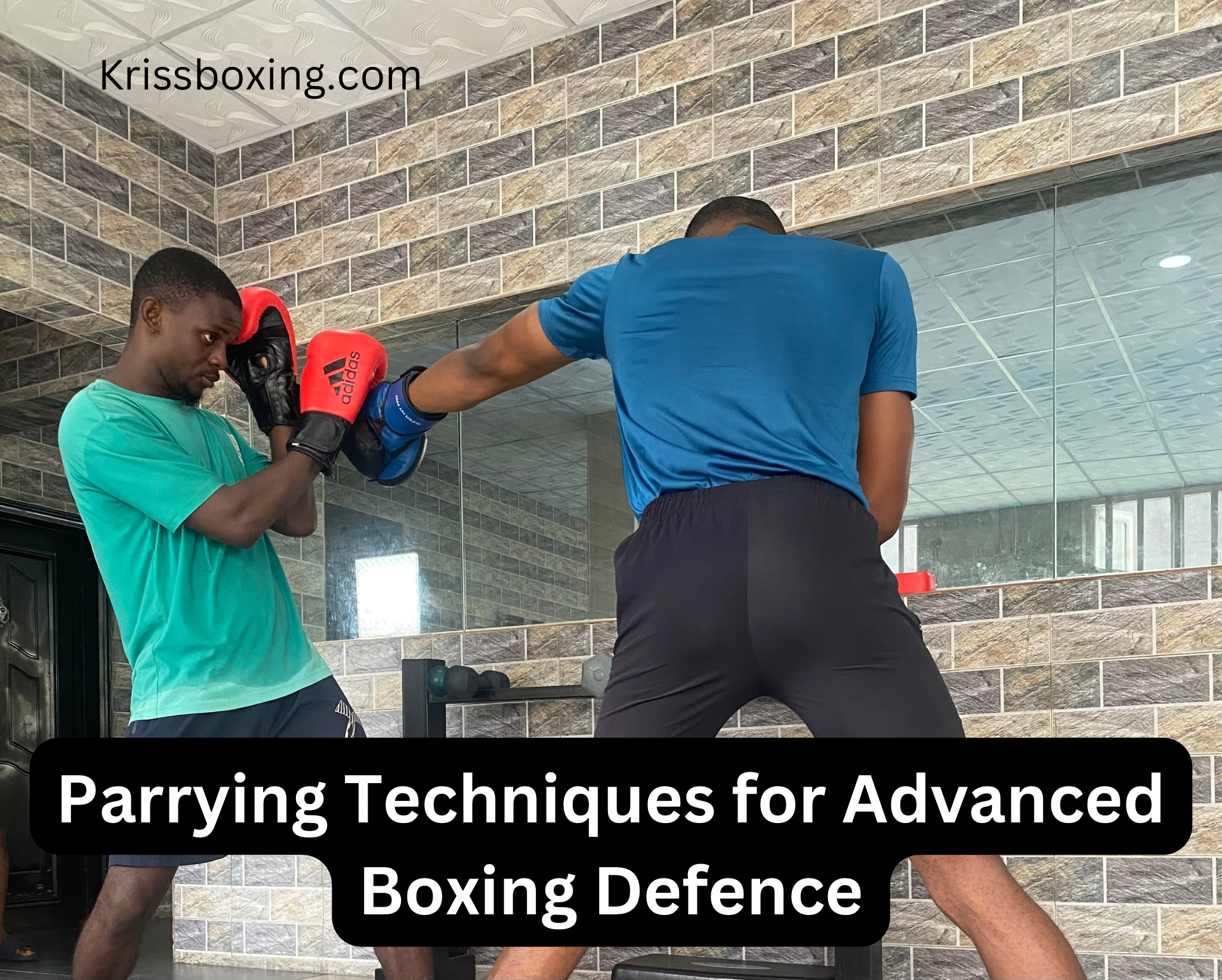Blocking is one of the integral concepts of the defense which implies the warding off of an opponent’s punches with the help of the hands and other limbs.
It enables a boxer to avoid being locked on and conserve energy while at the same time gaining favorable positions for countering.
In the contests of high-ranked pugilists, the ability to effectively parry the opponent’s blows can greatly improve their effectiveness of guard and total fighting style.
This article takes a closer look at parrying, and there is detailed information as well as tips for effective parrying defense in boxing.
The Fundamentals of Parrying
Parrying, in the simplest sense, is the act of deflecting the force of the opponent’s blow away from the target on the fighter’s body.
While blocking, a fighter takes the force of the punch and hence gets damaged, parrying on the other hand uses minimal movement to deflect the punch and leave the opponent off guard.
Types of Parrying Techniques
- Standard Parry: The standard parry is made using the palm or the forearm to dampen the force, and then guide the punch away from the body. For a jab, slight withdrawal with the lead hand in line with the spine will deflect the punch away from the face.
- Downward Parry: It is useful in countering straight punches. The boxer holds the fist laid back and as the punch is thrown, the other hand slides down in one swift motion and pushes the punch down thus opening up an opportunity for a counter punch.
- Circular Parry: Another sophisticated style is a circular parry during which the hand makes circles to deflect the punch. This can be very effective against hooks, which can be deflected and at the same time put the boxer in the correct position for counterpunching.
- Double Parry: In this technique, the boxer uses both his or her hands in parrying the punch. This is particularly good for countering strong straight punches by enabling the boxer to take the impact and in turn, guide it with more finesse.
Key Principles of Effective Parrying
- Timing: Parrying can be a very tricky move and to master this one needs to make sure that at the right time, he has punched. This deflection has to be done right at a time just before the punch makes contact with the body so that minimum movements are made and maximum protection is given.
- Minimal Movement: The use of parrying is aimed at employing the minimal movement possible to deflect the punch. This is after implementing the force generated by the punch by leaning the body back, a move that makes the boxer prone to other added punches.
- Counterattacks: Parrying regularly precedes immediate ripostes and counter-stepping often precedes alternation. The following attack after a parry should be an immediate and precise counterattack of the opposite force by the boxer.
Parrying and It’s Strategies
To illustrate, adding such complex and higher-level parrying skills can be very beneficial for the better defensive level of more experienced boxers. This part of the work is dedicated to the further development of parrying skills through tactics and exercises.
Integrating Footwork with Parrying
Parrying is very vital in martial arts, and footwork is a very important factor when parrying. Advanced boxers indeed coordinate the use of their hands and nimble footwork to improve their defense.
- Lateral Movement: Sometimes, when parrying, the boxer carries out lateral movement which makes the opponent’s job of striking him/her even more challenging. This is a combination of moving to the side of the opponent during parry, being erect, and staying too close or far from the opponent.
- Pivoting: Swinging on the lead leg while parrying can bring new angles of attack. This technique will enable a particular boxer to either dodge a punch or neutralize that punch while at the same time preparing for an optimum punch.
Drills for Advanced Parrying
- Mirror Drill: Parrying is occasionally exercised by facing the mirror to enable the boxers to see their actions and correct them when required. Minimally move and time punches while, at the same time, picturing an opponent delivering punches.
- Partner Drills: This can be practiced with a partner who could throw punches that are not strong, but real-looking ones. The partner can also adjust the ferocity and orientation of punches and make the boxer improve the way they dodge an attack.
- Shadowboxing with Parrying: Mention parrying in shadowboxing sets. Perform an opponent’s punches and try to dodge them while tracing the perimeters of the boxing ring. This helps with the formation of muscle memory and enhances the aspect of time/speed.
Combining Parrying with Other Defensive Techniques
Here it is only appropriate to note that parrying is one of the many movements that, when incorporated with other defensive techniques, help shape a competent boxer. When using these techniques, one can come up with a smooth interaction that will disorient and demoralize the rivals.
Parrying and Slipping
- Complementary Movements: Slipping is when the fighter employs his neck to maneuver his head out of the way of the punch whilst parrying is when the fighter uses his fists to baffle the punch. The given techniques enable a boxer to dodge several punches with ease due to the integration of these methods.
- Training Drills: Incorporate slipping and parrying during training drills, especially during the times of sparring. For example, miss a jab and at the same time cover up for a retort of a middle cross. This helps in training the body how it should be able to move or react to some of the attacks that may be inflicted on it.
Parrying and Blocking
- Layered Defense: While parrying is good for turning a punch away from you blocking is effective when parrying is not an option. Applying both techniques has the advantage of a shield in a nested structure through which it is challenging for the rivals to advance.
- Integrated Drills: When training one should also practice blocking hooks and uppercuts at the same time parrying straight punches. This helps you be in a position to guard against all types of attacks and so you can face a computing capacity control taken against you.
Frequently Asked Question
Why is parrying important in boxing?
Parrying is very necessary because by helps a boxer to dodge punches with little or no shifting of his weight from the balls of his feet to his toes and back. It opens up chances of counterpunching and prevents the acquisition of additional damage that results from taking punches.
How can I improve my parrying technique?
Find a sparring partner to punch at you or better still, shadow-box using the parrying movements; you can also use the mirror method to correct your movements when parrying. Mainly emphasize the time, non-agitation, and counterattack in the shortest time.
What are common mistakes to avoid when parrying?
Some of the mistakes are; that a player may move around too much, fail to time his attacks, or forget to attack back. Retreat and block only with precise and minimal motions that immediately precede the punch and always be prepared to counter.
Can parrying be combined with other defensive techniques?
Yes, parrying can be yielded along with other defensive procedures like slipping, weaving, and footwork. Combining all of these techniques results in a much tighter and active defense, which translates to making you a much quicker and better boxer.
What other boxers are famous for parrying?
Current generation pugilists such as Mayweather, Ali, and Whitaker are great parry artists in the ring. One can master the different moves that his/her opponent uses in and during fights, and the styles of parrying among other interesting aspects of boxing.
Conclusion
Parrying is not an easy thing and it is something that will take time to master after watching, possibly from rivals and learning how to defend well.
To achieve that, it is recommended to include certain kinds of parrying methods as the part of your training in addition to other defensive skills, and the further improvements of your defense will result in the general improvement of your performance in the ring.


